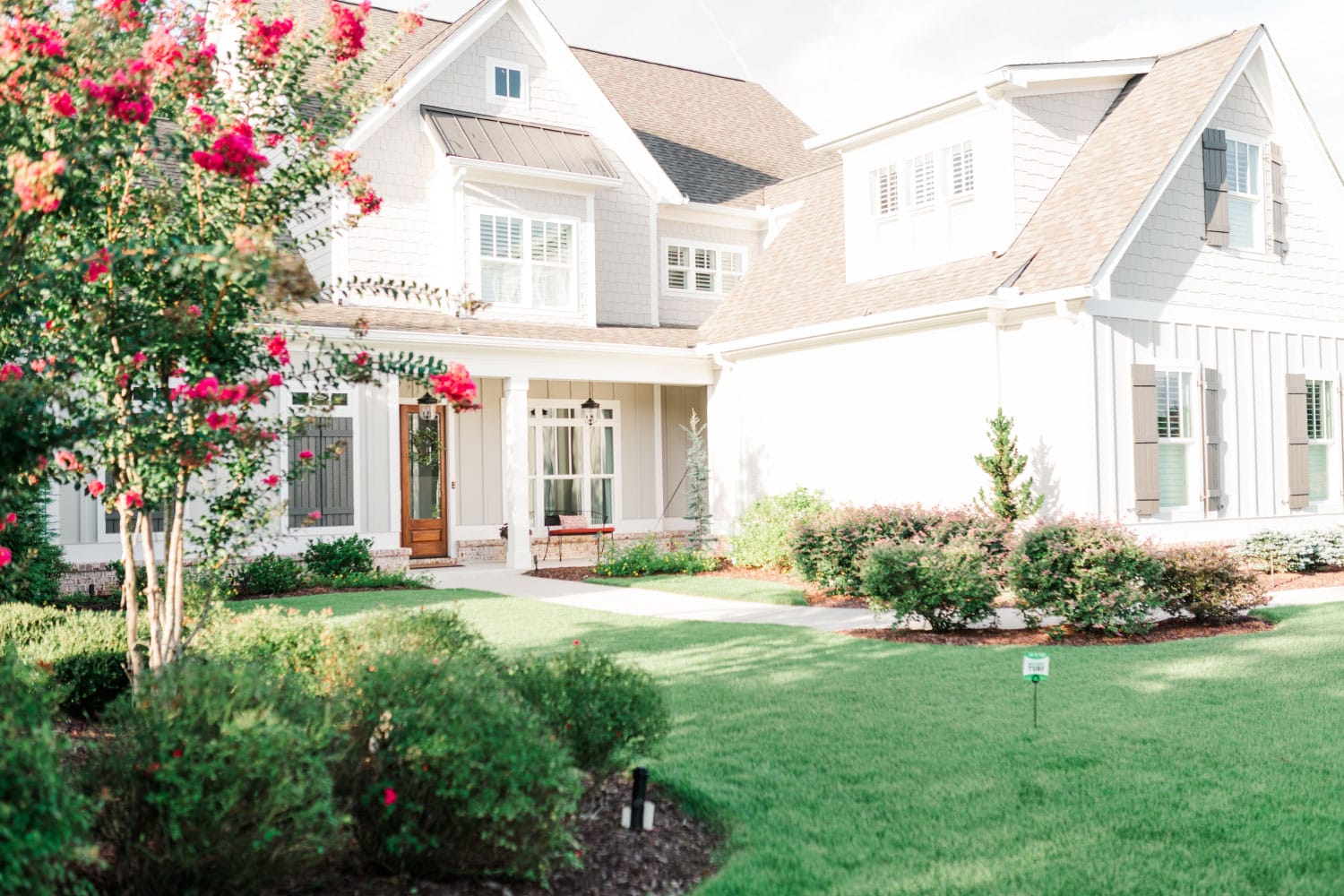Every yard is different, and that means we get all sorts of great questions–some of which are very challenging. There are a few questions about weeds and environmental conditions that come up more than others, but one of the most common questions is about the amount of sunlight that is needed for the healthiest lawn. Let’s talk about sunlight requirements, how much sunlight is necessary for growing healthy bermuda and zoysia, and why your lawn may be having trouble.
Why Is Sunlight Important for Growing Healthy Turf?
The bottom line: grass cannot grow without sufficient sunlight. Biology classes taught us the basics of photosynthesis. In brief, plants use water, nutrients, and sunlight to create both usable and storable energy. That energy is then used in all parts and processes of the plant, including the production of tissues such as roots, stems, and leaves. Some plants have growth habits and photosynthetic strategies more adapted to shady areas.
Perennial plants, trees, shrubs, and turfs such as bermuda and zoysia, are prolific users of energy. Trees and shrubs get larger, constantly producing new roots, branches, and leaves. Our turfs do the same as they grow and spread. Perennials also produce excess energy for storage in their roots. Turfgrasses store their excess energy in modified root structures called rhizomes. That’s how they survive dormancy, recover in the spring, and repair injuries. Think of them as rechargeable batteries.
As our turfs spread into areas with insufficient sunlight, you can see them become progressively thinner. That’s due to insufficient energy to produce more growth. The return-on-energy investment isn’t high enough. This process also occurs when sod is planted in an area with insufficient sunlight. What starts as beautiful, healthy turfgrass when planted will thin over time as the energy in the rhizomes (batteries) is depleted. Grass, including sod, can’t survive if it uses more energy than it makes.
Why Do Bermuda and Zoysia Need Different Amounts of Sunlight?
In general, zoysia is more well-adapted for shade. Zoysia grows more slowly, has harder tissues, and is better adapted to perform photosynthesis in lower light conditions than bermuda. That doesn’t mean, however, that a zoysia lawn can survive with zero sunlight. Online, you will find many ranges for different varieties of zoysia ranging from 4 hours of direct sunlight to 8 hours of indirect or filtered light. Light quality is really subjective, and for that reason, we often recommend 5-6 hours of direct sunlight. The more light zoysia gets, the better it will do.
Bermuda varieties need as much light as you can give them. Full, brutal, hot sunlight is what a bermuda lawn desires. Prolific growth and recovery habits mean exceptional energy production and use requirements. While fertilizers provide nutrition for use in these processes, they can’t replace light.
Why Is My Grass Thinning?
If it’s determined low sunlight is the cause of your lawn woes, there are two primary reasons we see most often: the chosen grass isn’t optimal or won’t perform well where it was planted or the landscape has aged. Here are the solutions to those issues:
- The turfgrass chosen isn’t optimal, or it won’t perform well where it was planted. This is common in relatively new homes, especially if there isn’t a great deal of space between structures. Most homes are planted with a variety of bermudagrass. If the lot is shady or homes are close together, the bermuda will thin with time. Similar issues occur on fence lines, by sheds, or under large trees. Depending on conditions, another species of turf may work better, or these areas may be best as beds.
- The landscape has aged. Beautiful old neighborhoods often mean big trees. Large oaks and pines are part of what makes an older home’s landscape beautiful. They are, however, excellent competitors for sunlight , reaching high into the sky. If the health of the trees is compromised, removal may be an option, but is that the right choice? Only the homeowner knows. There are other landscaping options that maximize beauty and utilize turfgrasses where they can thrive.
Want Better-Looking and Healthier Grass?
If your turf doesn’t look like you hoped it would look, we have a staff of service professionals and specialists ready to answer any question you may have. Our goal is to help you grow the grass you’ve always wanted. Give us a call at 678-831-6343, or send us an email to info@naturesturf.com.








